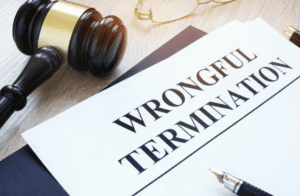 As you’re using our online damages calculator to assess what your employment case might be worth, you’ll see a value for “emotional distress and loss of enjoyment of life.” This category, commonly known as pain and suffering, is pretty much what it sounds like. An employee who wins a lawsuit is entitled to be “made whole again” or restored to the same status she had before the wrongdoing.
As you’re using our online damages calculator to assess what your employment case might be worth, you’ll see a value for “emotional distress and loss of enjoyment of life.” This category, commonly known as pain and suffering, is pretty much what it sounds like. An employee who wins a lawsuit is entitled to be “made whole again” or restored to the same status she had before the wrongdoing.
Table of Contents
ToggleHow to Calculate Pain and Suffering
True restoration is, of course, impossible. The tears have all been cried. You’ve suffered through months of stress, anger, and confusion. What the company did has likely damaged your relationships and financial well-being. No price tag can adequately compensate anyone for that suffering, but this is the blunt tool that our legal system uses.
As you might imagine, putting a dollar figure on suffering is an inexact science. It basically comes down to how badly the jury (or the judge, if you have a bench trial) feels for you. After you get off the stand, is the jury thinking, “That was bad, but it wasn’t that bad,” or is it in tears over your plight?
The objective here is to get the factfinder to feel what you felt. There are two primary ways to do this in employment cases. First, give vivid, detailed testimony about what happened to you and how it made you feel. Second, offer testimony from medical or mental health professionals.
Provide a Detailed Image
You (and your lawyer) will have to paint a clear, thorough mental picture for the jury of how your life changed after you were fired (or harassed or demoted). In personal injury cases, lawyers often do this by showing what we call “Day in the Life” videos. These videos show what an injured person’s life is like before an accident and then after it.
Imagine a video that starts with a vibrant 16-year-old girl practicing piano and laughing with her friends and family. Then it cuts to the same girl three months later, now paralyzed after a large truck ran a stop light and T-boned her car. The rest of the video shows what her life is like after the accident. Her mother has to lift her in and out of bed, because she can no longer get up by herself. In fact, she never will be able to again. Her sister combs her hair while you see the girl’s face, which now sags on the left side due to permanent nerve damage. You get the point. A juror would probably be crying at the end of that video. I know I would be.
For employment cases, it can be more difficult to show your pain and suffering. Most employment discrimination cases don’t involve physical injury. Instead, they involve mental and emotional damage—the type of harm that you can’t see or experience through a video. That means that you, and other witnesses, have to describe to the jury what happened to you. For instance, if your termination devastated and humiliated you, you need to make that come alive for the jury.
I’ll make one additional point here. You don’t want to minimize the pain you felt. But you also don’t want to embellish what happened for the sake of making it dramatic. If the jury gets the sense that you are making things up, you could lose your entire case.
In our next post, we’ll talk about how you can establish your case for pain and suffering damages through testimony.
Summing It Up
The fact-finder in your case can compensate you for the pain and suffering you experienced after your employer discriminated against you. To get the maximum value, you may want to talk to an attorney for assistance with your specific facts.





